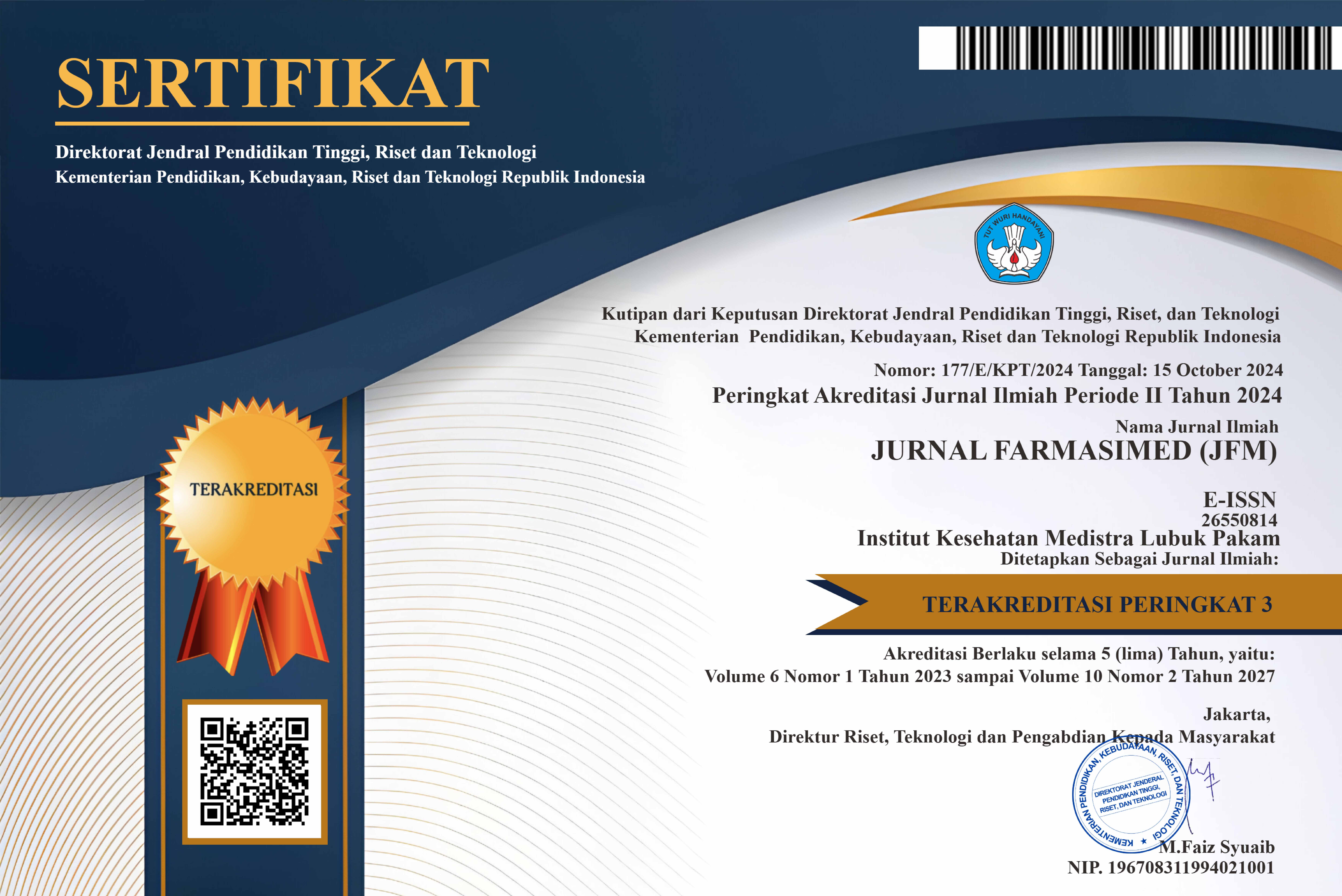ANTIBACTERIAL ACTIVITY OF KERSEN LEAF EXTRACT (MUNTINGIA CALABURA L) AGAINST STAPHYLOCOCCUS AUREUS
DOI:
https://doi.org/10.35451/jfm.v4i2.1012Keywords:
Muntingia calabura, Staphylococcus aureus, Zone of inhibitionAbstract
Kersen (Muntingia calabura) is a shady plant that is usually used as a shade. Cherry leaves contain several secondary metabolites such as flavonoid, tannin and terpenoid. Flavonoid can inhibit bacterial growth by denaturing proteins and damaging cell membranes and dissolving fats contained in cell walls. According to the World Health Organization as many as 25 million deaths worldwide in 2011, one third were caused by infectious diseases. One of the most common infectious diseases caused by the bacterium Staphyloccus aureus. The purpose of this study was to see whether the 96% ethanol extract of cherry leaves had antibacterial activity against Staphylococcus aureus. The concentration of the extract used was 15%, 30%, 45% and 60%. From the test results, it can be concluded that the largest inhibition zone diameter is at a concentration of 60% with an inhibition zone diameter of 6.78 mm and the smallest at a concentration of 30%, which is 0.42 mm. Concentration of 45% has (weak) activity inhibiting bacterial growth with an inhibition zone of 2.13 mm, while at a concentration of 15% it has no activity in the inhibition zone of bacterial growth.
Downloads
Downloads
Published
Issue
Section
License
Copyright in each article is the property of the Author.

























